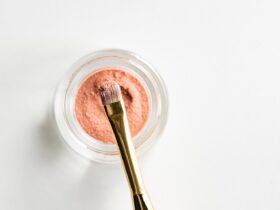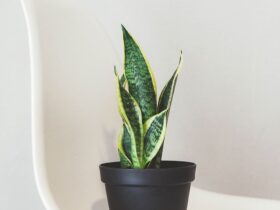Perfume is more than just a scent; it’s an investment, a statement, and a personal expression. Preserving the integrity of your perfume, and especially its delicate atomizer, is crucial to ensuring its longevity and maintaining its intended fragrance profile. The atomizer, that seemingly simple component responsible for dispersing your favorite scent, is surprisingly vulnerable to damage. From clogs and leaks to physical breakage, numerous factors can compromise its functionality. This article provides a comprehensive guide on how to protect your perfume atomizer and keep your beloved fragrances in pristine condition.
Understanding the Anatomy of a Perfume Atomizer
Before diving into protection strategies, it’s essential to understand the basic parts of a perfume atomizer. Typically, an atomizer consists of:
- The Nozzle: The part through which the perfume is sprayed. Its design significantly affects the spray pattern.
- The Pump: The mechanism that draws the perfume from the bottle and forces it through the nozzle.
- The Dip Tube: A thin tube that extends from the pump to the bottom of the perfume bottle, drawing up the liquid.
- The Actuator Button: The button you press to activate the pump.
- The Valve: A critical component that controls the flow of perfume and prevents leakage.
Each of these parts can be susceptible to damage if not handled correctly. Factors like exposure to air, extreme temperatures, and improper storage can all contribute to atomizer malfunction.
Common Causes of Perfume Atomizer Damage
Several factors can contribute to the deterioration of your perfume atomizer:
- Verstopfung: This is perhaps the most common issue. Perfume can dry within the nozzle and pump, creating a blockage. This is often due to evaporation of alcohol and other volatile components, leaving behind concentrated fragrance oils that solidify.
- Leakage: Leakage can occur due to a faulty valve, loose connection, or damage to the bottle itself. A leaking atomizer not only wastes perfume but can also damage surrounding surfaces.
- Physical Damage: Dropping the perfume bottle, applying excessive force to the actuator button, or using sharp objects to clean the nozzle can cause physical damage to the atomizer.
- Exposure to Air: Prolonged exposure to air can oxidize the perfume, altering its scent and potentially damaging the atomizer components.
- Temperature Fluctuations: Extreme heat or cold can affect the viscosity of the perfume and potentially damage the atomizer.
- Chemical Reactions: In rare cases, certain perfumes may react with the materials used in the atomizer, leading to corrosion or degradation.
Practical Tips to Protect Your Perfume Atomizer
Implementing the following practices can significantly extend the lifespan of your perfume atomizer and preserve the quality of your fragrances:
1. Store Your Perfume Properly
Proper storage is paramount. Perfume should be stored in a cool, dark, and dry place. Avoid storing perfumes in bathrooms where temperature and humidity fluctuate drastically. Ideal locations include drawers, closets, or dedicated perfume storage units. Keep perfumes away from direct sunlight, as UV rays can degrade the fragrance and damage the atomizer.
2. Keep the Bottle Upright
Always store your perfume bottles upright. Storing them on their side or upside down can cause the perfume to leak through the atomizer, leading to clogs and potential damage to the surrounding area.
3. Avoid Extreme Temperatures
Protect your perfume from extreme temperatures. Avoid storing them in cars, near radiators, or in direct sunlight. The ideal temperature range for perfume storage is between 60 and 70 degrees Fahrenheit (15-21 degrees Celsius).
4. Handle the Atomizer with Care
Be gentle when using the atomizer. Avoid applying excessive force to the actuator button. Press it firmly and smoothly to dispense the perfume. Avoid shaking the perfume bottle vigorously, as this can introduce air bubbles and potentially damage the atomizer.
5. Clean the Nozzle Regularly
Regular cleaning can prevent clogging. If you notice a decrease in spray quality or suspect a clog, try the following:
- Warm Water: Hold the nozzle under warm (not hot) running water for a few seconds to dissolve any dried perfume.
- Isopropyl Alcohol: Dip a cotton swab in isopropyl alcohol and gently clean the nozzle. Be careful not to push any debris further into the atomizer.
- Air Pump: Use a small air pump or a can of compressed air to blow out any remaining debris from the nozzle. Hold the nozzle away from your face and eyes during this process.
6. Prevent Contamination
Avoid touching the nozzle with your fingers or allowing it to come into contact with other surfaces. This can introduce oils and contaminants that can clog the atomizer.
7. Use Perfume Funnels for Decanting
If you need to decant perfume into a smaller atomizer, use a perfume funnel. This will prevent spills and contamination. Ensure the funnel is clean and dry before use.
8. Travel with Care
When traveling with perfume, protect the atomizer from physical damage. Use a padded perfume case or wrap the bottle in soft clothing to prevent breakage. Consider using travel-sized atomizers that are designed for portability and durability.
9. Consider Atomizer Covers
Some perfume bottles come with protective covers for the atomizer. If your perfume bottle has one, be sure to use it when the perfume is not in use. If not, you can purchase aftermarket atomizer covers to protect the nozzle from dust and damage.
10. Rotate Your Perfumes
If you have a large perfume collection, rotate your perfumes regularly. This will prevent any single bottle from sitting unused for an extended period, which can lead to clogging and other issues.
Troubleshooting Common Atomizer Problems
Even with diligent care, atomizer problems can still occur. Here are some common issues and how to address them:
- Clogged Atomizer: Follow the cleaning steps outlined above (warm water, isopropyl alcohol, compressed air).
- Leaking Atomizer: Check for any loose connections or cracks in the bottle or atomizer. If the bottle is damaged, consider transferring the perfume to a new bottle. If the atomizer is faulty, you may need to replace it.
- Weak Spray: This could be due to a partial clog or a weak pump. Try cleaning the nozzle and pump. If the problem persists, the pump may need to be replaced.
- No Spray: This usually indicates a complete clog or a broken pump. Thoroughly clean the atomizer. If cleaning doesn’t work, the pump is likely broken and needs replacement, or the perfume needs to be professionally accessed and potentially decanted.
Schlussfolgerung
Protecting your perfume atomizer is an essential part of preserving the value and enjoyment of your fragrances. By understanding the potential causes of damage and implementing the preventative measures outlined in this article, you can significantly extend the life of your atomizer and ensure your perfumes continue to deliver their intended scent for years to come. Remember that a little care goes a long way in safeguarding your fragrance investment. By prioritizing proper storage, gentle handling, and regular cleaning, you can keep your perfume atomizers functioning optimally and enjoy your favorite scents to the fullest.
Häufig gestellte Fragen (FAQs)
















Eine Antwort hinterlassen